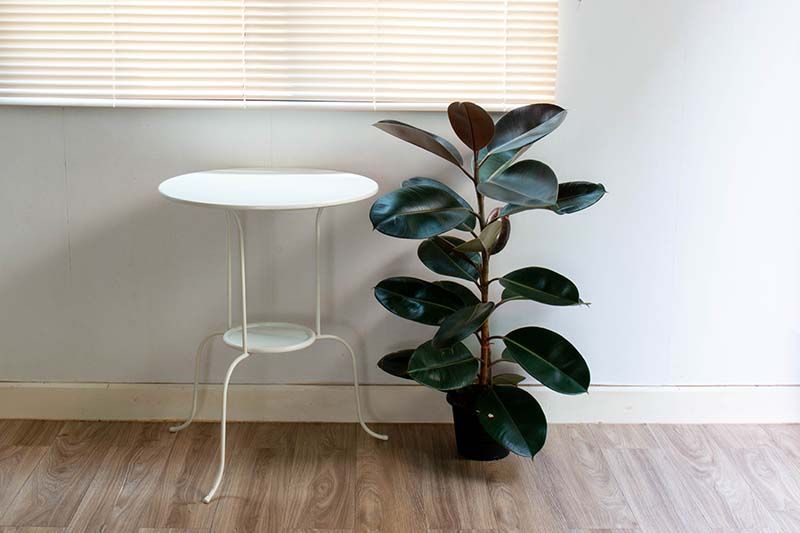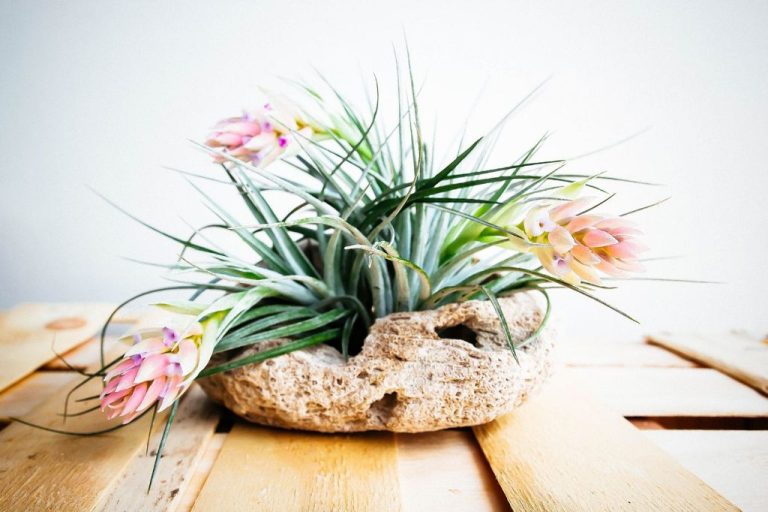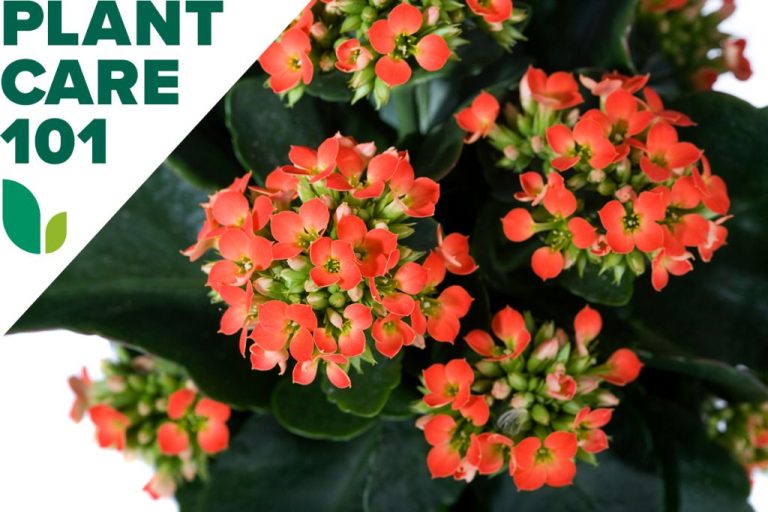The Complete Guide To Caring For Rubber Plants (Ficus Elastica)
Rubber plants (Ficus elastica) are a popular houseplant native to tropical Southeast Asia. With their glossy, leathery leaves and tall, tree-like growth habit, rubber plants make excellent houseplants and have been a mainstay of indoor gardening for generations.
In the wild, rubber plants grow to towering heights of 100 feet or more in their native rainforest habitats of India, Malaysia, Java, Sumatra, and Sri Lanka. The name “rubber plant” refers to the thick, rubbery feel of the leaves, which is due to a milky, latex-like sap inside. This sap was once used to make rubber, which is how the plant got its common name.
As houseplants, rubber plants typically grow between 6 to 8 feet tall indoors. Their dark green, oval-shaped leaves can grow up to 18 inches long. With the right care and environment, rubber plants grow rapidly when they are young, adding impressive height each year. The plants are easy to grow indoors, tolerate low light conditions, and are relatively drought tolerant once established. No wonder rubber plants have been prized houseplants for over a century!
Some fun facts about rubber plants from @the_heathersss on TikTok: https://www.tiktok.com/@the_heathersss/video/7119453165589744938
Ideal Growing Conditions

Rubber plants thrive in warm environments with high humidity. They prefer daytime temperatures around 70-80°F and nighttime temperatures around 60-70°F. Low temperatures below 50°F can damage the leaves. Humidity around 50-70% is ideal.
Rubber plants need bright, indirect light to thrive indoors. They can tolerate lower light conditions in the winter months, but generally prefer at least 3-4 hours of direct morning or evening sun per day year-round. Insufficient light will cause rubber plants to become leggy and lose their vibrant coloring. Place them near an east, west, or lightly shaded south facing window. Rotate the plant occassionally to prevent uneven growth toward the light. Use sheer curtains to filter harsh afternoon sun in summer (Source).
Avoid placing rubber plants in drafty areas or exposing them to cold drafts from AC vents, as this can shock the plant. Also take care not to overheat the plant near heat vents or fireplaces. Stable warm temperatures are best.
Soil Needs
Rubber plants thrive in loose, well-draining potting soil. The ideal potting mix contains equal parts potting soil, perlite or pumice, and peat moss or coco coir. This creates a light, airy medium that retains some moisture but also allows excess water to drain away freely (https://abeautifulmess.com/how-to-care-for-a-rubber-tree/).
Adding perlite, pumice, or orchid bark improves drainage and prevents soggy soil. You can also mix in some succulent or cactus potting mix for further aeration. Avoid heavy soil mixes like ordinary garden soil, as these will hold too much moisture. The potting mix should resemble a wrung-out sponge – moist but not sopping wet (https://miraclegro.com/en-us/indoor-gardening/how-to-grow-rubber-plants.html).
Always use containers with drainage holes and make sure any saucers underneath don’t collect water. This allows excess moisture to escape and prevents rotten roots.
Watering
Rubber plants prefer a thorough watering and then a period of dryness before being watered again. The frequency of watering depends on factors like the size of the pot, temperature, humidity, light levels, and growth season.
During the growing season in spring and summer, rubber plants typically need watering every 7-10 days. Allow the top inch or two of soil to dry out between waterings. Water less frequently in fall and winter, perhaps every 2-3 weeks.
The most common signs of underwatering are drooping, wrinkled, or curling leaves. Brown leaf tips and margins can also indicate insufficient water. Overwatering is evident when leaves turn yellow and drop off. Root rot due to excessive moisture leads to limp, mushy leaves.
Always water thoroughly until water drains from the drainage holes at the bottom of the pot. This ensures the entire root zone is hydrated. Water with room temperature or lukewarm water, as cold water can shock the roots.
Allow excess water to drain fully from the saucer or pot tray after watering. Do not allow the pot to sit in standing water, as this leads to root rot.
Fertilizing
Rubber plants benefit from fertilizer during the active growing season in spring and summer. Use a balanced liquid fertilizer diluted to half strength every 2-4 weeks from early spring to late summer according to package instructions. You can also use slow release fertilizer pellets sprinkled on the soil surface in spring.
Look for a fertilizer that is balanced, meaning it contains relatively equal amounts of nitrogen, phosphorus, and potassium. Many all-purpose indoor plant fertilizers will work well. Avoid over-fertilizing, as this can damage the roots. Feed less or not at all in fall and winter when growth slows.
If you notice few new leaves or small leaves, this can be a sign your rubber plant needs more fertilizer. Always follow fertilizer label instructions carefully.
Pruning
Rubber plants should be pruned to promote bushiness, maintain size, and encourage healthy growth. The best time to prune is during winter when the plant’s sap flow is lowest. Avoid pruning in spring when the sap is rising. When ready to prune, be sure to sterilize your pruning shears first to prevent disease transmission.
When pruning, make cuts just above a node where a leaf attaches or where a stem branches off [1]. Remove any dead, damaged, or crossing stems at their base. You can cut back leggy stems by half to encourage branching and fullness. Take off up to one-third of the overall foliage and stem growth to maintain the plant’s shape and direct energy to lower branches [2]. Always make clean cuts and avoid leaving stubs.
Pruning encourages side shoots and maintains a compact, bushy rubber plant over time. Be careful not to overprune, as this can shock the plant. Regular light pruning is better than occasional heavy pruning. Check your plant often and remove any problem areas promptly.
Propagation
Rubber plants can easily be propagated from stem cuttings. The best time to take cuttings is during the active growing season in spring and summer.
Cut a stem right below a leaf node. The cutting should be 4-6 inches long. Remove all but the top 2-3 leaves. Dip the end of the cutting in rooting hormone to encourage root growth. Plant the cutting in moist potting mix, sand, or vermiculite. Keep it consistently moist but not soggy.
Root formation can take 4-8 weeks. Check for root growth by gently tugging on the cutting. Once roots have developed, transplant the new plant into its own pot with potting mix. Gradually acclimate it to normal light levels.
Rubber plants can also be propagated from seeds. But germination is erratic and can take several months. It’s easier to grow new plants from cuttings.
For more details, see:
https://www.thespruce.com/how-to-propagate-rubber-trees-from-cuttings-5078692
Repotting
Rubber plants should be repotted every 2-3 years in spring, or whenever they become rootbound. Signs that your plant needs repotting include roots growing out of the drainage holes, stunted growth, or the plant becoming top-heavy and tipping over easily.
When repotting, select a pot that is only 2-4 inches wider than the current container to avoid overpotting. Use a sterile, well-draining potting mix and ensure the pot has drainage holes. Carefully remove the plant from its old pot and loosen any compacted roots along the sides and bottom. Place the plant in the new pot, fill with soil, and firm it gently around the roots. Water well after repotting and allow excess water to drain fully before returning the plant to its location.
When repotting larger rubber plants, it’s helpful to loosely tie the plant and wrap a sheet around it to facilitate handling. This method prevents leaf breakage and damage during the process (https://be.green/en/blog/revitalize-your-rubber-plants-with-proper-repotting).
Allow the plant time to recover from any root disturbance. It may show signs of transplant shock like drooping or yellowing leaves for a few weeks after repotting. Avoid fertilizing and maintain a lightly moist soil until the plant adjusts.
Pest and Disease Management
Rubber plants can be susceptible to common houseplant pests like spider mites, mealybugs, and scale. Keep an eye out for webbing, cottony masses, or bumps on the leaves and stems, which can indicate an infestation. According to Gardening Know How (https://www.gardeningknowhow.com/houseplants/rubber-tree/pests-on-a-rubber-plant.htm), the most common pests for rubber plants are:
- Spider Mites – Causes stippling and discoloration on leaves. Knock them off with water or use insecticidal soap.
- Mealybugs – White cottony masses on leaves. Wipe off with alcohol or insecticidal soap.
- Scale – Hard bumps on leaves and stems. Use horticultural oil or insecticidal soap.
To help prevent pests, inspect new plants before bringing home, isolate new plants, and keep the humidity up. Pests spread faster on stressed plants, so maintaining good care is key. Remove heavily infested leaves. For mild infestations, wipe pests off by hand or use a strong stream of water. Insecticidal soaps, neem oil, or horticultural oils can help control most soft-bodied pests without harming the plant.
Tips for Healthy Rubber Plants
Here are some tips and tricks for keeping your rubber plant thriving:
Light – Rubber plants grow best in bright, indirect light. Place them near an east or west facing window. Rotate the plant occasionally so all sides get adequate light exposure. Provide shade if placing in direct southern light.
Soil – Use a well-draining potting mix and avoid letting the soil get overly dry or stay soggy. Allow the top inch of soil to dry out between waterings.
Watering – Water thoroughly until it drains from the bottom of the pot. Take care not to overwater as this can cause root rot. Reduce watering in winter when growth slows.
Humidity – Rubber plants prefer average room humidity. Use a pebble tray or humidifier to boost moisture when air is very dry.
Fertilizer – Feed monthly in spring and summer with a balanced liquid fertilizer diluted to half strength. Discontinue feeding in fall and winter.
Pruning – Prune leggy stems back to just above a node to encourage bushiness. Wipe pruning shears with alcohol between cuts.
Repotting – Repot in spring every 2-3 years when roots fill the container. Use a pot one size larger with drainage holes. Handle new growth carefully as it’s fragile.
Pests – Inspect regularly for common pests like mealybugs, scale, and spider mites. Remove with a cotton swab dipped in alcohol. Be vigilant about checking the underside of leaves.
Toxicity – Rubber plant sap can be a skin and eye irritant for pets and humans. Wear gloves when handling and keep out of reach of children and pets.






